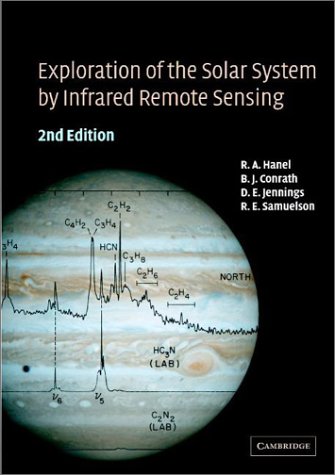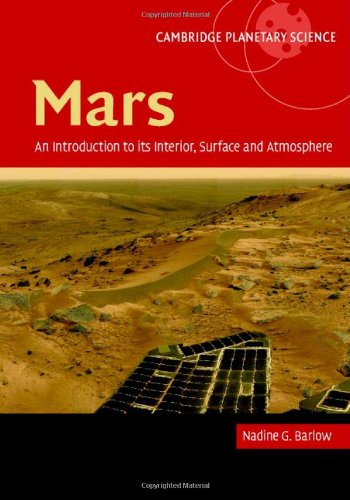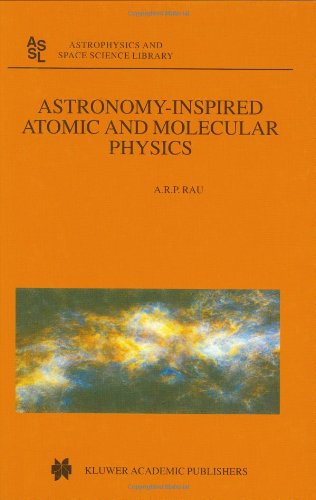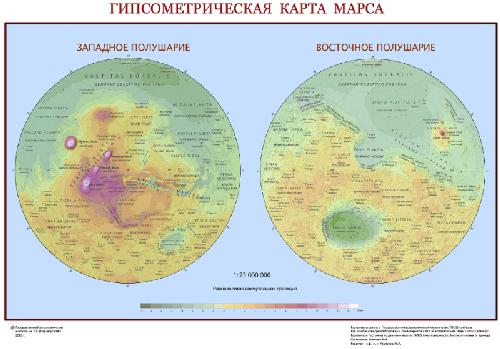R. A. Hanel, B. J. Conrath, D. E. Jennings, R. E. Samuelson9780521818971, 0521818974, 9780511061486
Table of contents :
Half-title……Page 3
Title……Page 5
Copyright……Page 6
Contents……Page 7
Introduction to first edition……Page 13
Introduction to second edition……Page 17
1 Foundation of radiation theory……Page 19
1.1 Maxwell’s equations……Page 20
1.2 Conservation of energy and the Poynting vector……Page 22
1.3 Wave propagation……Page 23
1.4 Polarization……Page 31
1.5 Boundary conditions……Page 32
1.6 Reflection, refraction, and the Fresnel equations……Page 35
1.7 The Planck function……Page 39
1.8 The Poynting vector, specific intensity, and net flux……Page 43
2 Radiative transfer……Page 45
a. Definitions and geometry……Page 46
b. Microscopic processes……Page 47
c. The total field……Page 55
d. The diffuse field……Page 58
2.2 Formal solutions……Page 60
a. Definitions……Page 62
b. The stacking of layers……Page 63
c. Composite scattering and transmission functions……Page 65
d. Starting solutions……Page 67
a. Nonscattering atmospheres……Page 68
b. Optically thin atmospheres……Page 69
a. Single scattering phase function……Page 70
b. Separation of variables……Page 71
c. Discrete streams……Page 72
d. Homogeneous solution……Page 73
e. Outside point source……Page 74
3 Interaction of radiation with matter……Page 76
a. The old quantum theory……Page 77
b. The Schrödinger equation……Page 78
c. Energy levels and radiative transitions……Page 80
3.2 Vibration and rotation of molecules……Page 82
3.3 Diatomic molecules……Page 84
a. Vibration……Page 85
b. Rotation……Page 90
c. Vibration–rotation interaction……Page 93
d. Collision-induced transitions……Page 96
a. Vibration……Page 98
b. Rotation……Page 104
c. Vibration–rotation transitions……Page 108
3.5 Line strength……Page 111
3.6 Line shape……Page 117
a. Solid and liquid phases……Page 121
b. Complex refractive indices……Page 123
a. Asymptotic scattering functions……Page 128
b. Rigorous scattering theory; general solution……Page 131
c. Particular solutions and boundary conditions……Page 135
d. The far field; phase function and efficiency factors……Page 140
a. Without scattering……Page 147
b. With scattering……Page 150
4.2 Models with a vertical temperature structure……Page 158
a. Single lapse rate……Page 159
b. Multiple lapse rates……Page 162
4.3 Model with realistic molecular parameters……Page 166
5 Instruments to measure the radiation field……Page 170
5.1 Introduction to infrared radiometry……Page 172
5.2 Optical elements……Page 173
5.3 Diffraction limit……Page 184
a. D.C. radiometers……Page 188
b. Chopped or a.c. radiometers……Page 197
c. Image motion compensation……Page 203
a. Absorbing and reflecting filters……Page 206
b. Prism spectrometers……Page 208
c. Gas filter, selective chopper, and the pressure modulated radiometer……Page 210
5.6 Interference phenomena in thin films……Page 212
a. Outline of thin film theory……Page 213
b. Antireflection coatings……Page 216
c. Beam dividers……Page 218
d. Interference filters and Fabry–Perot interferometers……Page 222
5.7 Grating spectrometers……Page 227
a. Michelson interferometer……Page 238
b. Post-dispersion……Page 258
c. Martin–Puplett interferometer……Page 261
d. Lamellar grating interferometer……Page 265
5.9 Heterodyne detection……Page 267
5.10 Infrared detectors in general……Page 271
a. Temperature change……Page 273
b. Noise in thermal detectors……Page 278
c. Temperature to voltage conversion……Page 282
5.12 Photon detectors……Page 290
a. Intrinsic and extrinsic semiconductors……Page 291
b. Photoconductors and photodiodes……Page 292
c. Responsivities……Page 293
d. Noise in photon detectors……Page 295
e. Circuits for photon detectors……Page 296
f. Detector arrays……Page 298
a. Concepts……Page 299
b. Middle and far infrared calibration……Page 302
c. Near infrared calibration……Page 309
d. Wavenumber calibration……Page 311
a. Scientific objectives……Page 312
b. Instrument parameters……Page 314
6.1 Instrument effects……Page 319
6.2 The terrestrial planets……Page 323
6.3 The giant planets……Page 335
6.4 Titan……Page 343
a. Tenuous atmospheres……Page 351
b. Surfaces……Page 352
7.1 Pluto and Charon……Page 360
7.2 Comets……Page 364
7.3 Asteroids……Page 367
8.1 Retrieval of atmospheric parameters……Page 370
a. General consideration……Page 373
b. Constrained linear inversion……Page 374
c. Relaxation algorithms……Page 378
d. Backus–Gilbert formulation……Page 379
e. Statistical estimation……Page 383
f. Limb-tangent geometry……Page 385
8.3 Atmospheric composition……Page 386
b. Feature identification……Page 387
c. Correlation analysis……Page 388
d. Abundance determination……Page 389
e. Profile retrieval……Page 390
f. Simultaneous retrieval of temperature and gas abundance……Page 394
g. Limb-tangent observations……Page 396
8.4 Clouds and aerosols……Page 398
a. Small absorbing particles……Page 399
b. Titan’s stratospheric aerosol……Page 400
a. Surface temperature……Page 403
b. Thermal inertia……Page 406
c. Refractive index and texture……Page 410
a. Introduction……Page 412
b. The Bond albedo……Page 414
c. Thermal emission……Page 420
9.1 Radiative equilibrium……Page 423
a. Governing principles……Page 424
b. The solar radiation field……Page 425
c. Thermal radiation and the temperature profile……Page 428
d. General atmospheric properties……Page 431
9.2 Atmospheric motion……Page 438
a. Governing equations……Page 439
b. Mars……Page 446
c. The outer planets……Page 454
d. Venus……Page 460
9.3 Evolution and composition of the Solar System……Page 462
a. Formation of the Solar System……Page 463
b. Evolution of the terrestrial planets……Page 468
c. Evolution of the giant planets……Page 470
9.4 Energy balance……Page 475
b. The giant planets……Page 477
Closing remarks……Page 483
Spherical coordinates……Page 485
A1.2 Spherical Bessel functions……Page 486
A1.3 Legendre polynomials……Page 487
Appendix 2……Page 489
Appendix 3……Page 490
References……Page 493
Abbreviations……Page 529
Index……Page 531







Reviews
There are no reviews yet.